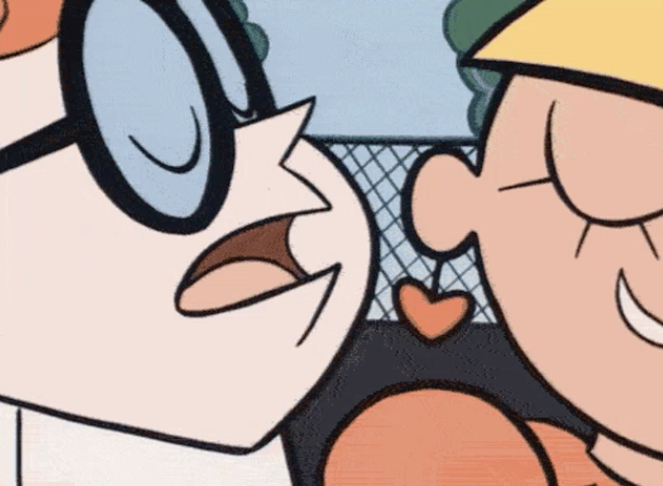Reading Time: 10 minutes

Introduction
In the fast-paced world of digital marketing, businesses are constantly seeking innovative ways to capture their audience’s attention. One of the most recent and compelling trends in this arena is short video marketing. From TikTok to Instagram Reels, short videos have taken the online world by storm. But what is it about these bite-sized clips that makes them so effective? The answer lies in the intricate interplay between psychology and marketing, particularly the powerful role that emotions play in shaping consumer behavior. In this blog, we’ll explore the psychology behind short video marketing and how it taps into consumer emotions.
The Rise of Short Video Marketing
The rise of short video marketing is nothing short of a digital revolution. With the average attention span of internet users dwindling to just a few seconds, marketers have had to adapt their strategies to keep up. Short video platforms like TikTok have gained immense popularity, boasting over a billion monthly active users. Instagram Reels and YouTube Shorts have also jumped on the bandwagon, creating a competitive landscape for short video content.
The appeal of short videos lies in their brevity and ease of consumption. They provide a quick, entertaining, and engaging way for businesses to connect with their audience. But what sets them apart from other forms of content is their profound ability to evoke emotions.

The Power of Emotions in Marketing
Emotions have always played a pivotal role in marketing. Whether it’s excitement, fear, nostalgia, or happiness, emotions can influence consumer decisions and brand loyalty. Short video marketing takes advantage of this by delivering emotional content in a concise package.
- Empathy and Relatability: Short videos often showcase real-life situations, challenges, and emotions that viewers can relate to. This fosters a sense of empathy, making the content more relatable and shareable.
- Surprise and Delight: Short videos can deliver quick surprises, humor, or clever twists that catch viewers off guard and leave a lasting impression. This element of surprise triggers emotions that viewers remember and associate with the brand.
- Storytelling in Seconds: Storytelling is a powerful tool in marketing, and short videos master the art of storytelling in a matter of seconds. They can create emotional connections with viewers through compelling narratives, leaving a memorable impact.

Overview of the Blog’s Main Points
- The Science of Attention: Discover how short videos capitalize on the limited attention span of modern consumers and keep them engaged.
- Emotional Triggers: Explore the specific emotions that short video marketing aims to trigger and how these emotions influence consumer behavior.
- Viral Potential: Understand why short videos are more likely to go viral and how this viral nature can benefit brands in terms of reach and brand recognition.
- Case Studies: Delve into real-world examples of successful short video marketing campaigns and dissect the emotional elements that made them effective.
- Tips for Marketers: Learn practical tips and strategies for incorporating short video marketing into your overall digital marketing strategy and leveraging consumer emotions effectively.
The Science of Short Videos
To effectively harness the power of short video marketing, we must first understand what qualifies as a short video, recognize the challenges posed by our limited attention spans, and appreciate how short videos seamlessly integrate into our fast-paced lives. In this section, we embark on a journey through the fascinating world of short videos, dissecting their impact on both creators and viewers alike.
A. What Qualifies as a Short Video
- Short videos are brief, concise visual content pieces typically ranging from a few seconds to one to two minutes.
- They convey complete ideas or narratives within limited timeframes, requiring creators to be creative and to the point.
B. The Attention Span Challenge
- Human attention spans have dwindled to eight seconds in the digital age.
- Short videos are tailored to overcome this challenge by delivering content quickly and efficiently, ensuring viewer engagement.
C. How Short Videos Fit into Our Fast-Paced Lives
- Our busy lives and constant information overload make short videos the ideal choice.
- They are bite-sized, easily consumable, and can be enjoyed on the go, seamlessly integrating into our hectic routines.

The Emotional Connection
In the realm of short video marketing, emotions are the secret sauce that can turn a fleeting viewer into a loyal customer. As we explore the psychology behind short videos, we must delve into the profound role of emotions in shaping our decisions, the specific emotions short videos aim to evoke, and how real-life examples showcase the power of emotionally-driven short video campaigns.
A. The Role of Emotions in Decision-Making
Emotions have an undeniable influence on our decision-making processes. While we may believe that our choices are purely rational, studies show that emotions play a significant role in our perceptions, judgments, and actions. When it comes to purchasing products or engaging with brands, emotions often take center stage. They can lead us to trust a brand, feel a connection, and ultimately make a purchase.
B. Types of Emotions Short Videos Aim to Evoke
- Joy and Humor: Short videos often aim to bring joy and laughter to viewers. They use humor to create a positive association with the brand or message, making the content more enjoyable and shareable.
- Fear and Anticipation: Some short videos leverage fear or anticipation to captivate their audience. They create suspense, sparking curiosity and a desire to learn more about a product or message.
- Nostalgia and Sentimentality: Nostalgia is a potent emotion that can transport viewers back in time. Short videos that tap into nostalgia and sentimentality evoke powerful emotions, as they connect with cherished memories and experiences.
C. Real-Life Examples of Emotionally-Driven Short Video Campaigns
To truly appreciate the impact of emotionally-driven short video campaigns, we’ll explore real-life examples of brands that have mastered this art:
- Dove’s Real Beauty Campaign: Dove’s short videos celebrate real beauty by portraying diverse individuals, fostering feelings of empowerment and self-acceptance.
- Budweiser’s Heartfelt Commercials: Budweiser has crafted emotionally-driven short videos, often featuring heartwarming stories, to create a deep emotional connection with its audience.
- Nike’s Inspirational Videos: Nike’s short videos are known for their ability to inspire and motivate. They evoke a sense of determination and empowerment, aligning the brand with achieving greatness.

The Art of Storytelling
In the realm of short video marketing, storytelling is the compass that guides viewers through a brief but impactful journey. To understand how short videos tap into consumer emotions, we need to explore the art of storytelling within this format. This section delves into the narrative structure of short videos and how storytelling triggers emotions in the brain.
A. The Narrative Structure of Short Videos
- Beginning: Hooking the Viewer
- The opening moments of a short video are crucial. They must immediately captivate the viewer’s attention, offering a compelling hook that entices them to keep watching.
- Whether through a question, a visually stunning scene, or an intriguing statement, the beginning sets the stage for what’s to come.
- Middle: Building Tension or Emotion
- The middle portion of the short video is where the story unfolds. It builds tension, emotion, or curiosity, drawing the viewer deeper into the narrative.
- Through concise and carefully chosen elements, short videos create a connection between the viewer and the content, often evoking empathy or relatability.
- End: Providing a Satisfying Conclusion
- The conclusion of a short video should offer a satisfying resolution or a clear call to action.
- It can leave viewers with a sense of fulfillment, inspiration, or a desire to engage further with the brand or message.

B. How Storytelling Triggers Emotions in the Brain
Storytelling in short videos triggers emotions in the brain through a complex interplay of factors:
- Mirror Neurons: When viewers see emotions portrayed in a story, their mirror neurons activate, allowing them to empathize with the characters or situations in the video. This creates a direct emotional connection.
- Oxytocin Release: Engaging narratives, even in short videos, can trigger the release of oxytocin, a hormone associated with bonding and trust. This fosters a sense of connection with the story and the brand behind it.
- Memory and Recall: Stories are easier to remember than facts or statistics. Short videos that tell a compelling story are more likely to be stored in the viewer’s memory, creating a lasting impression.
- Neural Coupling: As viewers immerse themselves in a story, their brain activity synchronizes with the narrative. This synchronization strengthens the emotional impact and makes the content more memorable.
The Role of Visual and Auditory Elements
In the world of short video marketing, the visual and auditory elements are the paintbrush and canvas, composing a masterpiece that resonates with viewers. In this section, we will explore the profound impact of visuals in short videos, with a focus on color psychology, imagery, and symbolism.
A. The Impact of Visuals in Short Videos
- Color Psychology:
- Color Associations: Colors evoke emotions and associations in viewers. Short videos harness the psychology of colors to create specific moods and perceptions. For instance, red may evoke excitement and urgency, while blue can convey trust and calmness.
- Branding: Consistent color use reinforces brand identity. Short videos often incorporate brand colors to build recognition and convey brand values. The choice of color can influence how viewers perceive the brand and its message.
- Imagery and Symbolism:
- Powerful Imagery: Short videos use compelling visuals that resonate with the target audience. Whether it’s stunning landscapes, relatable everyday scenes, or creative animations, the imagery is carefully selected to enhance the narrative and emotional impact.
- Symbolism: Symbols and metaphors are often employed to convey complex ideas or emotions in a concise manner. They allow viewers to connect with the content on a deeper level by tapping into universal or culturally significant symbols.
Creating Shareable Content
In the world of short video marketing, the ultimate goal is to create content that not only resonates with viewers but also compels them to share it with their networks. In this section, we will explore the factors that contribute to the shareability of short videos, including leveraging social proof, harnessing FOMO (Fear of Missing Out), and the power of user-generated content and audience participation.
A. The Shareability Factor in Short Videos
Short videos, by their very nature, are designed to be shareable. Their brevity makes them easy to consume and share on various social media platforms. However, several key factors can enhance their shareability:
- Emotional Resonance: Short videos that evoke strong emotions, whether it’s laughter, awe, or empathy, are more likely to be shared. Emotionally charged content compels viewers to spread the experience.
- Relevance: Content that aligns with current trends, events, or cultural moments is more likely to be shared as it feels timely and relatable.
- Entertainment Value: Short videos that entertain or amuse viewers are highly shareable. People love to share content that brings joy to their friends and followers.
- Informative and Educational: Educational or informative short videos that provide valuable insights or solutions to common problems can also go viral if they offer something of genuine value to the audience.

B. Leveraging Social Proof and FOMO (Fear of Missing Out)
- Social Proof: People tend to follow the crowd. Short videos that have already been shared, liked, or commented on tend to garner more attention and shares. Encouraging engagement and showcasing existing social proof can boost a video’s shareability.
- FOMO (Fear of Missing Out): Creating a sense of urgency or exclusivity in short videos can trigger FOMO. When viewers believe they’ll miss out on something exciting or valuable by not sharing, they are more likely to hit that “share” button.
C. User-Generated Content and Audience Participation
- User-Generated Content (UGC): Encouraging your audience to create and share their own short videos related to your brand or product can be a powerful strategy. UGC not only builds a sense of community but also extends your reach as users share their content with their networks.
- Audience Participation: Engaging your audience by asking questions, running contests, or encouraging them to share their experiences related to your brand can boost shareability. When viewers actively participate in your content, they become more invested in it and are more likely to share.
Measuring Success
As we conclude our journey into the psychology behind short video marketing, it’s essential to understand how to measure the effectiveness of your efforts. In this final section, we will explore the key performance indicators (KPIs) for short video marketing, the importance of A/B testing and analytics, and how to adjust your strategies based on audience feedback.
A. Key Performance Indicators for Short Video Marketing
- Views, Shares, and Likes:
- The most obvious indicators of success for short videos are the number of views, shares, and likes. These metrics gauge the initial engagement and reach of your content.
- Conversion Rates and Sales:
- Ultimately, the success of your short video marketing campaign should be measured by its impact on your business goals. Track conversion rates and sales attributed to your videos to determine their real-world effectiveness.
B. The Importance of A/B Testing and Analytics
- A/B Testing: Experiment with different elements of your short videos, such as visuals, messaging, or call-to-action buttons, and compare the performance of these variations. A/B testing helps you identify what resonates best with your audience.
- Analytics Tools: Utilize analytics tools provided by social media platforms or third-party tools to gather data on viewer demographics, engagement patterns, and watch time. These insights help you understand your audience better.
- Click-Through Rates (CTR): For videos with specific calls to action, measure the click-through rates to determine how effective your video is at driving desired actions, such as website visits or sign-ups.
C. Adjusting Strategies Based on Audience Feedback
- Engage with Comments: Pay attention to comments and feedback on your videos. Engage with your audience by responding to comments and addressing concerns or questions. This shows that you value their input.
- Survey Your Audience: Conduct surveys or polls to gather direct feedback from your audience. Ask them what types of content they prefer, what emotions resonate with them, and what improvements they’d like to see.
- Iterate and Experiment: Based on the feedback and data you gather, be willing to iterate and experiment with your short video marketing strategies. Adapt to the changing preferences of your audience and the evolving landscape of digital marketing.
To Bring It All Together
The psychology of short video marketing is rooted in its ability to connect with viewers on an emotional level. Emotions drive decisions, and short videos excel in triggering joy, fear, nostalgia, and other feelings that influence consumer behavior. These emotional connections leave a lasting impact, fostering brand loyalty and trust.
The future of short video marketing is undeniably bright. As technology evolves, short videos will continue to adapt and innovate, offering businesses new ways to engage with their audience. The potential for businesses lies in their ability to harness this dynamic tool effectively, staying attuned to changing audience preferences and emerging platforms. So, stay creative, stay emotional, and stay connected – the future of short video marketing awaits, and the possibilities are endless.


